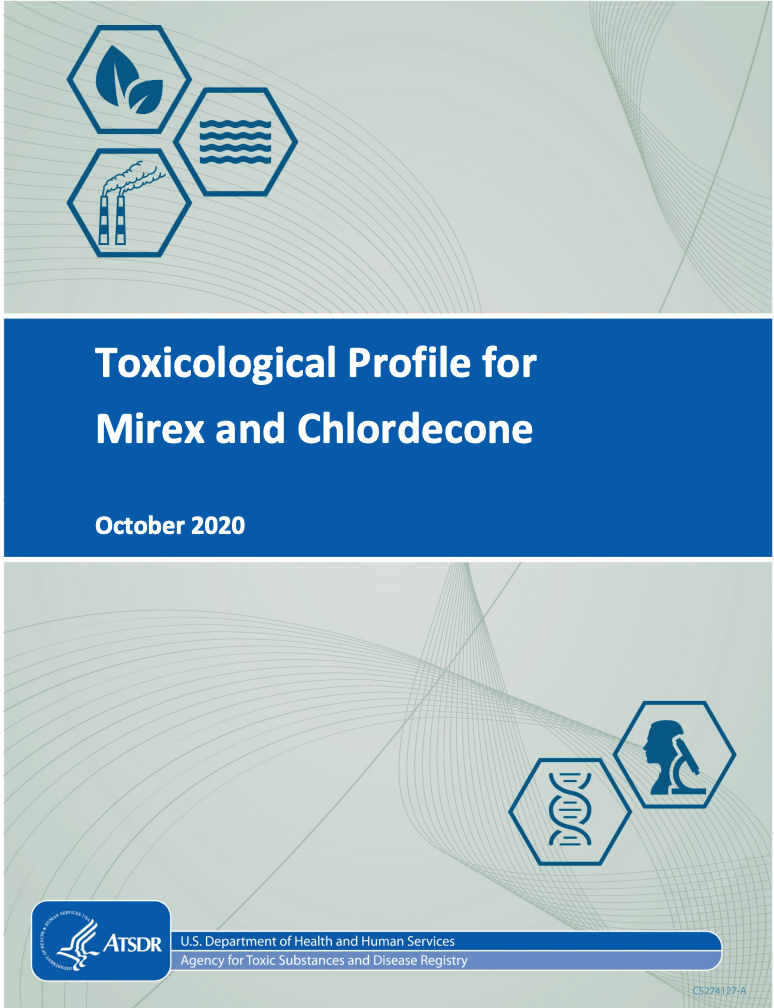Chemycal has been acquired by 3E
Learn MoreChemycal has been acquired by 3E
Learn MoreDiscover how Chemycal PRO helps you boosting your regulatory monitoring:

1.1 OVERVIEW AND U.S. EXPOSURES
Mirex and chlordecone are structurally similar highly-chlorinated derivatives of cyclopentadiene. The only structural difference between mirex and chlordecone is that mirex has two bridgehead chlorine atoms where chlordecone has a carbonyl oxygen atom. Mirex was commercially introduced in the United States in 1959 for use in pesticide formulations and as an industrial fire retardant. In the 1960s, mirex was commonly used to control fire ants in southern States. Mirex was banned for use in the United States in 1978, except for use on pineapples until stocks on hand were exhausted. Chlordecone was mainly registered for use in the United States to control banana root borer, although it was also used to control other pests. All registered products containing chlordecone were effectively canceled in 1978.
People living in areas surrounding hazardous waste sites may be exposed to mirex or chlordecone primarily via dermal contact with, or ingestion of, contaminated soil since these compounds bind to soil particles. The other major means of exposure for people living near hazardous waste sites is ingestion of indigenous wildlife since mirex and chlordecone are bioconcentrated in fish and animals. Ingestion of mirex or chlordecone from drinking water is unlikely because of their limited solubility in water (Kenaga 1980). Similarly, inhalation exposure to mirex or chlordecone following volatilization from contaminated media is not likely to be a major route of exposure since these chemicals are essentially nonvolatile. For the general population, the most likely route of exposure to mirex or chlordecone is via ingestion of contaminated food because these chemicals have been observed to persist in soil for decades following cessation of application as pesticides. Both of these chemicals are excreted very slowly and bioaccumulate in the body after exposure.
CONTINUE READING ON: atsdr.cdc.gov
2013 © MyChemicalMonitoring. ALL Rights Reserved. About Us | Terms and Conditions